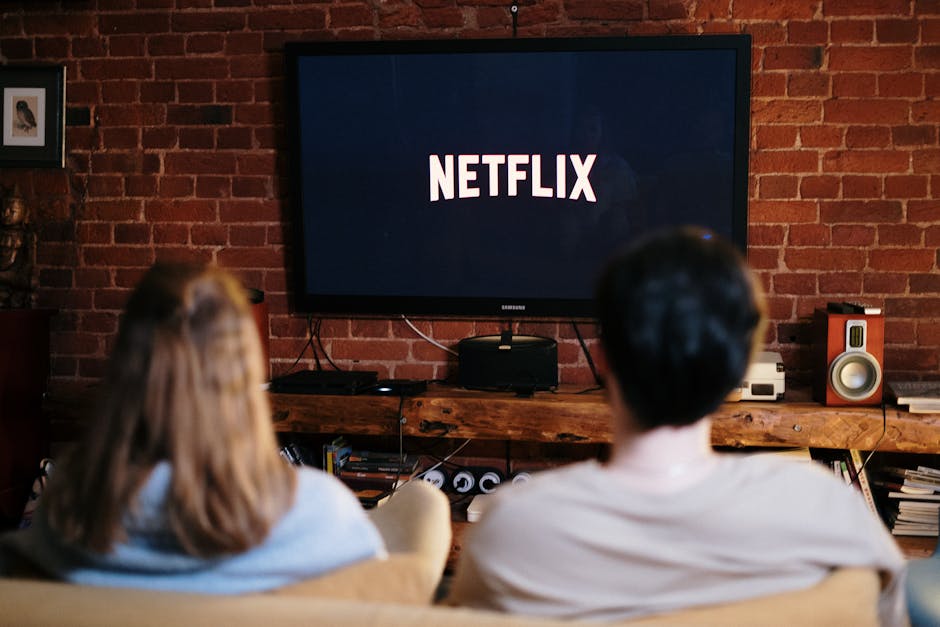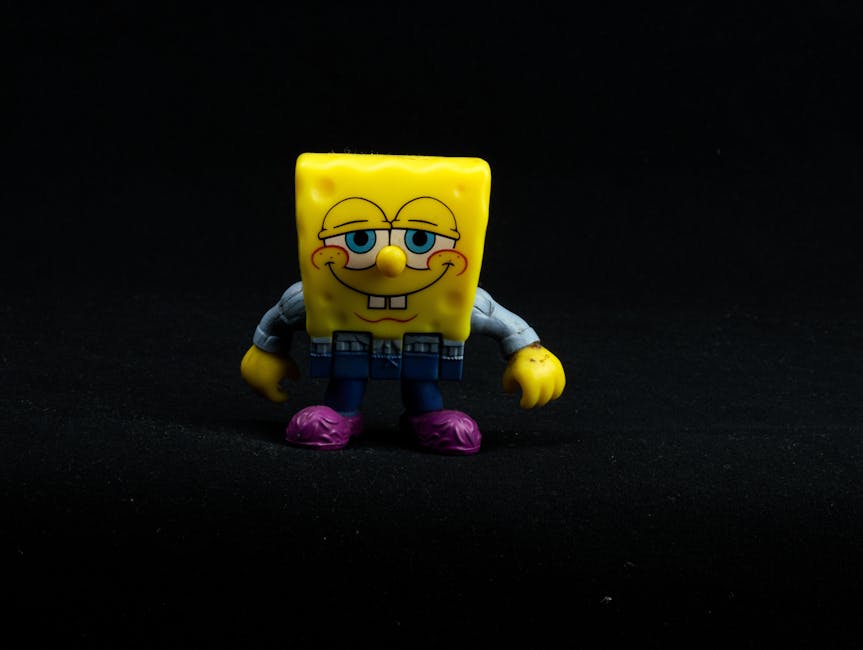The Fan Theory Phenomenon: Why We Love to Speculate

Photo by Felix Young on Pexels
In the golden age of television, audiences are no longer content to simply watch their favorite shows—they dissect, debate, and dream up intricate theories that rival the complexity of the stories themselves. This phenomenon, known as the fan theory, has become a cultural force. Whether it’s the cryptic town of From, the enigmatic corridors of Severance, or the ever-twisting plots of prestige TV, viewers are hooked not just by what’s on screen, but by what might be lurking beneath the surface.
What drives this obsession? At its core, theorizing is about participation. Fans crave a sense of agency and belonging in the worlds they love. Online communities—Reddit threads, Discord servers, and Twitter timelines—become digital campfires where ideas are exchanged, clues are parsed, and wild speculation is not just tolerated, but celebrated. The communal aspect of theorycrafting transforms passive viewing into an interactive experience, blurring the line between creator and consumer.
But there’s more to it than community. The rise of complex, serialized storytelling has invited audiences to become detectives. Showrunners plant Easter eggs and red herrings, inviting scrutiny and rewarding eagle-eyed fans. The thrill of being “right”—of predicting a twist or unraveling a secret—can be intoxicating. Even when theories miss the mark, the act of speculation keeps viewers invested, sustaining hype between seasons and ensuring that watercooler conversations never die out.
Fan theories also serve a deeper psychological purpose. They help us make sense of ambiguity and uncertainty, offering closure or meaning where the narrative withholds it. In shows like From, where the rules of reality are constantly in flux, fan theories provide a framework for understanding the chaos. They turn confusion into curiosity, frustration into fascination.
Ultimately, the art of theorizing is a testament to the power of storytelling. It proves that great TV doesn’t just entertain—it inspires, challenges, and invites us to co-create the narrative. In the labyrinth of modern television, fan theories are the breadcrumbs that guide us through the maze.
Case Study: The Mystery of “From” and Its Endless Interpretations

Photo by cottonbro studio on Pexels
Few recent series have ignited the imagination of fans quite like MGM+’s From. Since its debut, the show has cultivated a fervent following, with viewers poring over every frame in search of answers to its central mysteries. The premise—strangers trapped in a nightmarish town with no escape—sets the stage for a narrative riddled with questions. Who or what controls the town? Are the characters dead, dreaming, or caught in a time loop? And is there any hope of escape?
One of the most persistent theories is that the town represents a kind of purgatory, with residents trapped between life and death. Fans point to the characters’ traumatic arrivals—often following car crashes or near-death experiences—as evidence. The eerie, dreamlike quality of the town and its supernatural occurrences further fuel this interpretation. Yet, as many have noted, such a solution risks feeling like a narrative cop-out, and the show’s creators seem intent on delivering something more nuanced.
Another popular line of speculation involves the concept of time loops. Recent episodes have introduced hints that events may be repeating or that characters are reliving certain moments with slight variations. This has led some to theorize that the town is a kind of cosmic experiment, with its inhabitants serving as unwitting test subjects in a cycle that resets whenever escape seems imminent.
Perhaps the most tantalizing theories center on the show’s mysterious symbols and the enigmatic “Boy in White.” Fans have scoured scenes for hidden clues—recurring motifs, cryptic dialogue, and background details—that might reveal the rules governing the town. Is the Boy in White a benevolent guide, a manipulator, or something else entirely? Theories abound, each adding new layers to the collective mythology.
What makes From such fertile ground for speculation is its refusal to provide easy answers. Every revelation seems to raise new questions, and the show’s creators have embraced the ambiguity, encouraging fans to fill in the gaps. The result is a vibrant ecosystem of theorycrafting, where each new episode sparks fresh debates and wild conjecture. In the world of From, the journey is as important as the destination—and the fan theories are part of the adventure.
Severance and the Puzzle Box: How Mystery Drives Fandom

Photo by LusterPix® Media on Pexels
Apple TV+’s Severance is another masterclass in mystery-driven storytelling, and its labyrinthine plot has spawned a thriving community of theorists. The show’s premise—a corporation that surgically divides employees’ work and personal memories—invites endless speculation about the true nature of Lumon Industries, the motivations of its enigmatic leaders, and the fate of its divided characters.
Central to the allure of Severance is the puzzle box format. Every detail, from the color of the walls to the cadence of elevator dings, is scrutinized for hidden meaning. Fans have become adept at connecting dots, noticing patterns, and proposing elaborate explanations for even the most mundane occurrences. This meticulous attention to detail is not just encouraged but rewarded by the show’s creators, who have seeded the narrative with subtle clues and callbacks.
One of the most compelling theories revolves around the company’s ultimate goal. Is Lumon attempting to create new forms of consciousness? Are the “Innies” (workplace selves) being groomed for something beyond mere labor? Theories range from the philosophical to the fantastical, with some speculating that the company seeks to transcend human suffering, while others posit more sinister motives.
The show’s ambiguous characters also fuel speculation. The true identity and intentions of figures like Kier Eagan, Helly R., and Gemma have been hotly debated, with fans crafting intricate timelines and character maps. Theories about multiple severances, hidden relationships, and secret agendas abound, each adding new layers to the unfolding mystery.
What sets Severance apart is its ability to sustain suspense without sacrificing emotional resonance. Theories are not just intellectual exercises—they’re deeply personal, reflecting viewers’ hopes, fears, and anxieties about work, identity, and autonomy. As the show heads toward its next season, the fan community remains as engaged as ever, eagerly awaiting the next twist in the puzzle box.
The Anatomy of a Great Fan Theory: What Makes Them Stick?

Photo by Vitaly Gariev on Pexels
Not all fan theories are created equal. Some fade into obscurity, while others capture the collective imagination and become part of the cultural conversation. What separates a compelling theory from a forgettable one? The answer lies in a delicate balance of creativity, plausibility, and narrative resonance.
A great fan theory starts with evidence. The most persuasive theories are grounded in the text, drawing on specific details, recurring motifs, and narrative patterns. They invite readers to see the story in a new light, connecting dots that may have gone unnoticed. At the same time, the best theories leave room for interpretation, acknowledging the ambiguity and complexity of the source material.
Creativity is another essential ingredient. Theories that simply restate the obvious or rely on tired tropes rarely gain traction. Instead, the most memorable speculations offer fresh perspectives or unexpected twists. They challenge assumptions and invite audiences to think outside the box, often proposing solutions that are as imaginative as they are plausible.
But plausibility matters. Theories that ignore the established rules of the narrative or require convoluted logic tend to be dismissed by the community. The most enduring theories strike a balance between boldness and believability, offering explanations that feel both surprising and inevitable in hindsight.
Finally, resonance is key. Theories that tap into the emotional core of a story—its themes, symbols, and character arcs—tend to stick. They offer not just answers, but meaning, helping audiences make sense of the narrative on a deeper level. In this way, fan theories become a form of collective storytelling, enriching the experience for everyone involved.
The Impact of Fan Theories on Storytelling and Fandom

Photo by Mario Spencer on Pexels
Fan theories do more than just entertain—they can shape the trajectory of a show and the culture surrounding it. In some cases, showrunners actively engage with fan speculation, dropping hints or subverting expectations in response to popular theories. This dynamic creates a feedback loop, with creators and audiences co-creating the narrative in real time.
The influence of fan theories is evident in the way shows structure their mysteries. Writers are increasingly aware of the scrutiny their work will receive, and many craft their stories with an eye toward audience engagement. Easter eggs, ambiguous endings, and open-ended questions are not just narrative devices—they’re invitations to theorize.
This participatory approach has transformed the viewing experience. Audiences no longer passively consume content; they become detectives, analysts, and storytellers in their own right. Theories spread rapidly across social media, fueling hype and sustaining interest between episodes or seasons. In some cases, fan theories have even influenced the direction of a show, with creators responding to audience feedback or incorporating fan-generated ideas.
Yet, the impact of fan theories is not always positive. Overzealous speculation can lead to disappointment if the actual narrative fails to live up to expectations. The pressure to “solve” a story can overshadow its emotional or thematic depth, reducing complex narratives to mere puzzles. Still, for many fans, the joy of theorizing outweighs the risk of being wrong. The process itself becomes part of the fun, deepening engagement and fostering a sense of community.
In the end, fan theories are a testament to the power of collective imagination. They demonstrate that storytelling is not a one-way street, but a collaborative journey. As long as there are mysteries to unravel and worlds to explore, fans will continue to speculate, debate, and dream up new possibilities.
Evergreen Appeal: Why Speculation Will Always Have a Place in TV Culture

Photo by Deneen L Treble on Pexels
As television continues to evolve, one thing remains constant: the allure of the unknown. Theories and speculation are as old as storytelling itself, but in the digital age, they have taken on new life. The ability to connect with fellow fans, share ideas, and debate interpretations has transformed the way we experience our favorite shows.
The evergreen appeal of fan theories lies in their adaptability. As new shows emerge and old favorites return, the cycle of speculation begins anew. Each generation of viewers brings fresh perspectives, building on the theories of the past and forging new paths through the narrative maze. Theories become part of the cultural memory, passed down and reinterpreted with each rewatch or revival.
This enduring fascination speaks to something fundamental about human nature. We are, at heart, pattern-seekers and meaning-makers. The act of theorizing is an expression of curiosity and creativity, a way of engaging with stories that transcends the boundaries of the screen. It turns viewers into participants, inviting us to co-author the stories we love.
For creators, the culture of speculation offers both challenges and opportunities. The pressure to surprise and satisfy an engaged audience can be daunting, but it also pushes writers to craft richer, more layered narratives. The interplay between creators and fans keeps the medium vibrant and dynamic, ensuring that television remains a living, evolving art form.
In the end, the art of fan theorizing is more than just a pastime—it’s a celebration of storytelling itself. As long as there are mysteries to unravel and worlds to explore, fans will continue to speculate, debate, and dream. The maze may never be fully solved, but the journey through it is what makes TV culture so endlessly fascinating.
Sources
- https://creepybonfire.com/horrortainment/tv-and-films/popular-theories-about-from-series-that-will-blow-your-head/
- https://www.cbr.com/mindblowing-from-fan-theories-that-make-sense/
- https://www.esquire.com/entertainment/tv/a64223477/severance-season-2-finale-theories-predictions/




